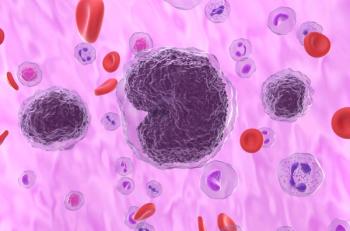
Low-Income Patients Who Have HF Shoulder Heavy SDOH Burden

Data on 10 social determinants of health (SDOH) were analyzed to determine their distribution among low-income patients hospitalized for heart failure (HF) at a safety-net hospital.
More emphasis needs to be placed on finding solutions to the social determinants of health (SDOH) that hinder care access for low-income patients living with
The patients (N = 118) in this study had been hospitalized for HF exacerbations at Parkland Memorial Hospital, a safety-net hospital in Dallas. Most (61.9%) of these participants were non-Hispanic Black; 20.3% were Hispanic; 15.3%, non-Hispanic White; and 2.5%, non-Hispanic other. Their mean (SD) age was 53.4 (10.5) years, 75.4% were male patients, and the median annual income was $13,200. HF with reduced ejection fraction (HFrEF) was prominent, with mean left ventricular rejection fraction (LVEF) being 30% (14%). A diagnosis of HFrEF is typically given when LVEF is 40% or below.2
“Association between SDOH and HF is well established,” the study authors wrote. “Distribution of SDOH amongst patients hospitalized for HF is unknown, especially at safety-net hospitals.”
They investigated these 10 SDOH domains: housing instability, financial health, food security, cost-related medication nonadherence, transportation barriers, social support, interpersonal violence, discrimination, health literacy, and health numeracy. Data on substance use disorder were also included where available. To be included in this analysis, all of the patients had to speak English or Spanish and they could not be in police custody or jail.
Overall, approximately half of the patients in this analysis (47.5%) reported at least 1 form of substance use disorder, and 63.1% reported living below 130% of the federal poverty limit. The top 3 most common SDOH were discrimination (87.3%), poor financial health (78.0%), and transportation barriers (67.8%).
Drilling down even further, the following were reported:
- 56.8% had access to a vehicle
- 55.9% were unemployed
- 50.9% had little social support
- 48.3% had difficulty paying bills
- 47.5% were nonadherent to their medication because of cost-related issues
- 47.5% self-reported poor health status
- 42.7% had low health literacy
- 25.0% had low health numeracy, or the ability to understand clinical and public health data3
- 12.7% had any savings
- 9.3% experienced interpersonal violence
Food security was classified into 3 categories—high, low, and very low—with most respondents (44.9%) reporting they had a high level of food security. Just as many (43.2%) reported a very low level of food security, and 11.9% reported a low level of food insecurity.
When prevalence was analyzed by race, 5 areas of distinction emerged, highlighting differences:
- Married status was reported by 40.0% of White study participants compared with 16.3% of Black and 0.0% of other racepatients (P = .01)
- Almost twice as many White patients and more other race patients, respectively, had access to a vehicle vs Black patients: 80.0% vs 66.7% vs 46.3% (P = .003)
- More other race patients reported having any savings vs White and Black patients: 66.7% vs 14.3% vs 10.0% (P = .01)
- Black patients were most likely to report low health literacy: 50.6% vs 33.3% of other race patients and 25.7% of White patients (P = .04)
- Black patients had the highest mean total of SDOH vs White and other race patients: 5.3 (2.1) vs 4.3 (2.1) vs 3.7 (2.1)
Overall, most patients reported 3 or 7 SDOH (16.1% each) as affecting their HF care, followed by 15.25% reporting 6 SDOH; 14.41%, 5 SDOH; 12.71%, 4SDOH; 7.63%, 2 SDOH; 6.78%, 8 SDOH; 5.08%, 1 SDOH; 3.39%, 9 SDOH; and 0.85%, 10 SDOH.
“There is a substantial SDOH burden in safety-net, inpatient populations,” the study authors concluded. “Next steps should include targeting SDOH for their effects on HF outcomes.”
References
1. Lokesh N, Nagori A, Keshvani N, Ambarish P, Sumarsono. Social determinants in a low-income population with heart failure (HF). Presented at: ASPC Congress on CVD Prevention; July 21-23, 2023; Arlington, Texas. Poster 143.
2. What is ejection fraction ? (HFrEF and HFpEF). Heartfailurematters.org. Accessed August 14, 2023.
3. Numeracy. CDC. Updated March 18, 2022. Accessed August 14, 2023.
Newsletter
Stay ahead of policy, cost, and value—subscribe to AJMC for expert insights at the intersection of clinical care and health economics.













































